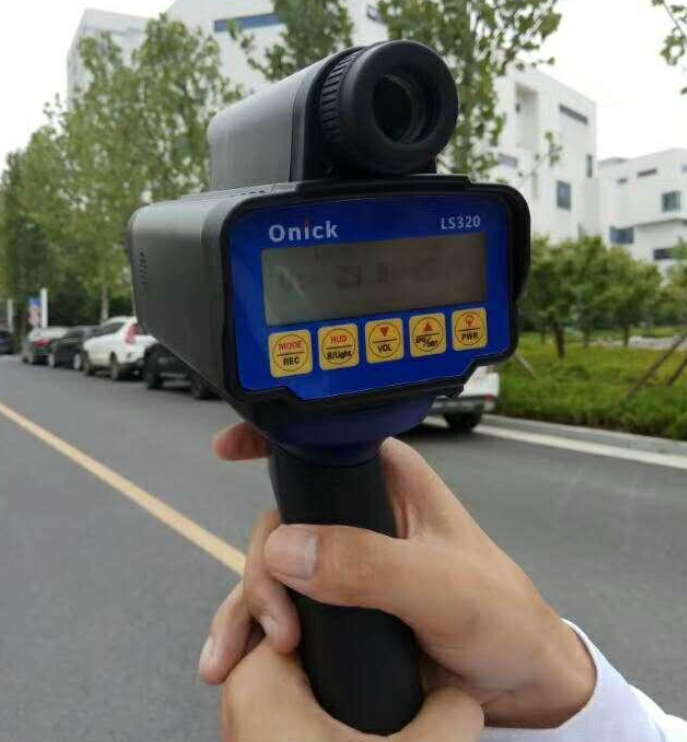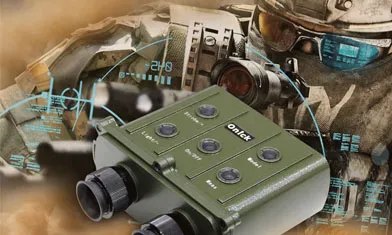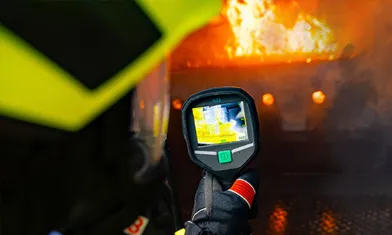Lsp320 Handheld Laser Speed Meter: Speed Catcher In Traffic Enforcement
On the front lines of traffic enforcement, traffic officers often rely on specialized equipment to maintain road order and ensure public safety. Handheld speed cameras play a crucial role, acting like tireless "speed trackers," accurately monitoring vehicle speeds. Today, we'll delve deeper into a popular device in traffic enforcement: the Onick LSP320 handheld laser speed camera.
A fusion of technologies
Leveraging its extensive expertise in optical technology, Onick Outdoor Optics has cleverly integrated advanced laser speed measurement and video imaging technologies to create the Onick LSP320, an ultra-portable laser speed camera and recording system. More than just a simple speed camera, it's an all-in-one handheld laser speed camera and evidence collection device that combines speed measurement, distance measurement, photo capture, and video recording. This innovative design significantly facilitates traffic enforcement efforts, significantly improving efficiency and accuracy. Excellent Performance Analysis
Accurate Speed Measurement, Accurate to the Millimeter
The LSP320 measures speeds over a wide range, from slow-moving vehicles to high-speed cars, with a range of 0 km/h to 320 km/h. Its speed measurement accuracy is astonishing, with an error of only ±1 km/h. This means it accurately reports speed values regardless of vehicle speed fluctuations, providing reliable data support for traffic enforcement. On busy city roads or highways, traffic officers can quickly obtain a vehicle's precise speed with a simple press of the measurement button, determining whether it is speeding.
Clear Capture, Conclusive Evidence
For traffic enforcement, simply knowing a vehicle is speeding is not enough; clear evidence is required. The LSP320 excels in this regard. Equipped with a Sony 5-megapixel high-definition industrial CCD camera and a 75mm fixed-focus lens, it can capture high-quality still images and video of speeding vehicles. At the moment of capture, the camera not only clearly captures the vehicle's full appearance and license plate number, but also simultaneously displays key information such as speed, time, and location, creating a complete and irrefutable chain of evidence. Even in complex lighting conditions, by properly adjusting the camera's exposure parameters and image gain (including both automatic and manual modes), clear and usable images are ensured.

Convenient Operation, Clear View
Operational convenience is another highlight of the LSP320. It features a 4.3-inch color touchscreen display for clear and easy reading. Whether in the scorching summer sun or in the dim light of night, traffic officers can easily read the information on the screen. The touchscreen allows users to quickly perform various operations, such as setting speed measurement parameters and switching measurement modes. The instrument's built-in Global Positioning System (GPS) module not only automatically sets and synchronizes the system time, but also displays the device's real-time location on the display, further facilitating law enforcement work. Furthermore, it features a voice prompt function with synchronized speed and sound, eliminating the need for traffic officers to constantly monitor the screen during operation, improving work efficiency. Rugged and durable, adaptable to diverse environments
Traffic enforcement often requires work in a variety of challenging environments, from scorching heat to freezing cold, and even inclement weather. The LSP320 takes this into account, featuring an IP65 waterproof/dustproof design that effectively resists dust and rain. With an operating temperature range of -10°C to +60°C, it operates reliably even in extreme environments. Whether under the scorching sun on a highway or in the freezing wind of a remote mountainous area, it consistently performs exceptionally, safeguarding traffic enforcement.
Various modes for flexible response
The LSP320 offers multiple measurement modes to meet the needs of diverse enforcement scenarios.
Continuous mode
Pull the trigger to measure speed, and only save the speed if it exceeds the speed limit when the trigger is released. This mode is ideal for scenarios where continuous speed monitoring is required without excessive recording of vehicles traveling at normal speeds. For example, on roads with heavy traffic, traffic police can use continuous mode to quickly identify speeding vehicles without being distracted by the large amount of data from normal vehicles.
Lock Mode
Press the trigger to measure speed. When the measured speed reaches a relatively ideal value, the vehicle is exceeding the speed limit, and the distance is within the set capture distance, the vehicle is locked and photographed. This mode is particularly useful when it is necessary to accurately capture a specific speeding vehicle. For example, when traffic police spot a vehicle clearly speeding but need to wait for the right moment to capture it due to the large number of vehicles around it.
Automatic Mode
Press the trigger once to start measuring speed, and press it again to stop. The vehicle will be photographed when it reaches within 20 meters of the optimal focus distance and exceeds the speed limit. This mode automatically identifies speeding vehicles and captures them, significantly reducing the workload of traffic police and is particularly suitable for monitoring passing vehicles at fixed speed checkpoints.
Record Mode
Press the trigger to start recording, and release it to stop and save the video. This mode can be used to record the entire process of a traffic violation, providing more comprehensive video evidence for subsequent case handling. For example, when handling complex traffic disputes or dangerous driving, the video recorded in recording mode can recreate the scene, helping law enforcement officers better understand the full picture.
Tracking Mode
When the vehicle is not yet in focus, the camera records the video. Once it reaches focus, the camera converts the video to a still image. This mode offers unique advantages when tracking a specific target vehicle, fully capturing the entire process from a distance to the ideal capture position, ensuring that no critical information is missed.
Wide Applications
Besides its important role in traffic enforcement, the Onick LSP320 has also found widespread application in a variety of other fields due to its outstanding performance.
During field training, it can help coaches or commanders accurately measure the speed of trainees or equipment, enabling better evaluation and planning of training outcomes. In sports, for events requiring precise speed measurement, such as track and field and cycling, the LSP320 provides fast and accurate speed data, providing valuable support for training and competition. In the military and police technology field, it can be used to monitor the speed of moving targets and assist in mission execution. Whether monitoring suspicious vehicles during patrols or assessing target speed during special operations, it has significant practical value.
The Onick LSP320 handheld laser speedometer, with its superior performance, rich functionality, and wide applicability, has become an indispensable tool for traffic law enforcement and other related fields. It not only contributes to maintaining traffic order and ensuring public safety, but also promotes the application and development of speed measurement technology in multiple industries, bringing greater convenience and safety to our lives and work.





















